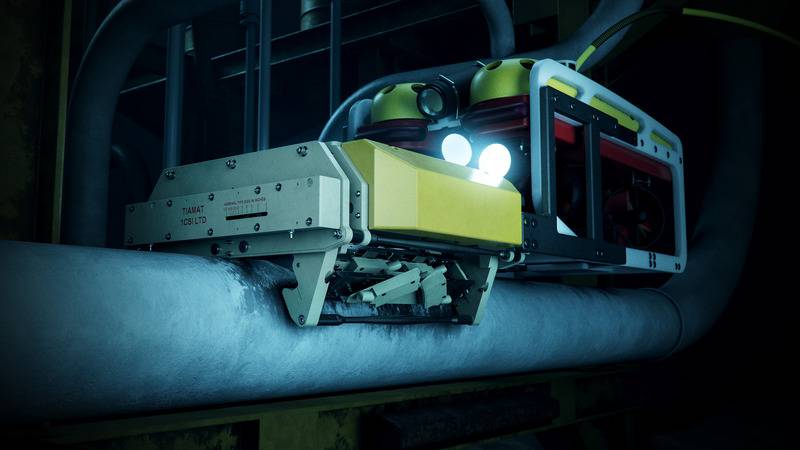Feature
Maxon
maxon: 200 times faster subsea inspection with the goddess of the deep
From oil & gas installations to submarines, structures operating in deep sea conditions need regular inspection. Remote operated vehicles (ROVs) make this process much safer and less expensive, and they rely on scanning technology, which is crucial to data collection. Precise motion control is helping a new subsea inspection device achieve highly accurate inspection with the fastest-yet speeds of data collection.
Inspection technology from maxon.
© 1CSI Ltd 2023200 times faster subsea inspection with the goddess of the deep
The cold water of the ocean floor is an inhospitable environment for humankind, yet key infrastructure is operating down here. These subsea installations help provide us with vital resources such as oil, gas, and renewable energy, but meanwhile, their structures are in a constant fight against the hostile sea. This means that finding and repairing corrosion that can develop on essential components, such as pipelines and manifolds, is a crucial and regular requirement.

Inspection technology
Deliverable from any size of ROV, Tiamat, named after the Mesopotamian goddess of the sea, is a subsea inspection technology that can detect wall thickness, cracks, and flaws on complex subsea infrastructure - even including submarines and inside windmill monopiles. Crucially, the device achieves this with 200 times faster data collection than existing subsea scanners. Currently undergoing deepwater trials, Tiamat has been created by subsea inspection experts 1CSI.
Providing precise data collection is achieved with a full HD camera image, as well as an ultrasonic inspection mapping resolution of 1mm by 1mm with a +/-0.3mm field measuring accuracy. Tiamat's ultrasonic weld inspection involves phased array transducers comprising as many as 250 elements. With the ROV guided onto the desired inspection area, Tiamat goes to work. Its wide A4-size scan footprint sweeps forward and backwards across the infrastructure, in an arc of 312 mm by 154mm in 10 seconds, before the ROV guides Tiamat onward to the next inspection area. It's this relatively large scale of data capture, combined with the video and transducer array, that helps Tiamat achieve such high-speed scanning coverage.
Precise motion control
The smooth and stable travel of Tiamat's sensors, running on a track that adapts to flat or curved surfaces, is fundamental to the speed and quality of scanning. High performance motion control is vital to manage the position and velocity of the inspection probe carriage, and this is achieved thanks to a pair of maxon MA30 subsea actuators.
About maxon UK
maxon DC micromotors move everything that has to be rotated with high precision and reliability. They are used to drive applications as demanding as NASA's Mars rovers, as well as racing cars, through to humanoid robots, cardiac pumps, and high-precision industrial applications. For more information, visit www.maxongroup.co.uk